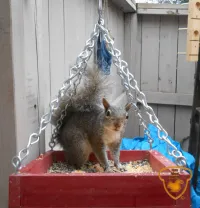How to Build a Wildlife-Friendly Backyard
Creating a wildlife-friendly backyard isn’t just good for the environment—it’s also incredibly rewarding. With a few thoughtful choices, your outdoor space can become a haven for birds, pollinators, small mammals, and other local wildlife. Whether you’re working with a tiny patio or a large garden, here’s how to build a welcoming refuge that supports biodiversity.

Understand Your Local Wildlife
Start by observing what animals, birds, and insects are native to your area. Look up local species and ecosystems, and consider:
-Native birds (songbirds, woodpeckers, owls)
-Small mammals (squirrels, rabbits, possums)
-Insects (bees, butterflies, dragonflies)
-Amphibians and reptiles (frogs, lizards, snakes)
Knowing what lives in your region will help guide your plant and shelter choices.
Grow Native Plants
Native plants are adapted to your local climate and soil, making them low-maintenance and highly beneficial for native wildlife. Benefits include:
-Providing natural food sources (berries, seeds, nectar)
-Creating shelter and nesting areas -Supporting pollinators
Tips:
-Use a mix of trees, shrubs, flowering plants, and ground cover.
-Choose plants that bloom at different times to provide year-round support.
Provide Food Sources
Different animals eat different things, so offering a variety of food options is key:
Bird feeders:
Seed, suet, or nectar for hummingbirds
Pollinator plants:
Milkweed, coneflower, lavender
Fruit-bearing shrubs:
Serviceberry, elderberry, currants
Compost piles:
Attract beneficial insects and fungi
Don’t forget to clean feeders regularly to prevent disease.
Offer Fresh Water
All wildlife needs water. Provide it year-round if possible:
Birdbaths:
Change the water frequently
Shallow dishes:
For bees and butterflies
Mini ponds or water features:
Help frogs and dragonflies thriveAdd rocks or branches so insects and small animals can drink safely
In winter, consider heated water dishes.
Create Shelter and Nesting Sites
Give wildlife safe places to hide, rest, or raise young:
Brush piles:
Great for birds, rabbits, and insects
Dead wood:
Leave some logs or stumps to attract decomposers
Nest boxes:
For squirrels, birds, and bats
Thick shrubs or hedgerows:
-Provide year-round shelter
-Avoid tidying up too much in fall—many species overwinter in leaf litter or dormant plants.
Minimize Chemicals
Pesticides, herbicides, and synthetic fertilizers can be harmful to the creatures you’re trying to attract. Instead:
-Use organic compost to enrich soil
-Introduce beneficial insects to control pests
-Hand-pull weeds or use mulch to suppress them
Add Layers and Variety
Biodiversity thrives in environments with diverse layers:
-Ground cover, mid-level shrubs, and taller trees
-Open sunny spaces + shaded cool areas
-Rocks, logs, and small water features add interest and function
This variety supports a wide range of wildlife.
Be Patient and Observe
A wildlife-friendly garden takes time. Don’t be discouraged if results aren’t immediate. Over the weeks and months, you’ll likely notice:
-More birds visiting feeders or nesting
-Bees and butterflies pollinating your flowers
-New sounds at dusk or dawn (frogs, owls)
Keep a nature journal and enjoy the transformation.
Final Thoughts
By building a backyard that welcomes wildlife, you’re creating a small but meaningful sanctuary in an increasingly developed world. Every feeder, native flower, or nest box contributes to a healthier planet—and brings you closer to the wild world just outside your door.